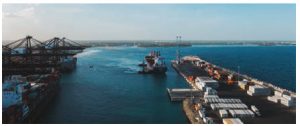
As ambassador, my priority is to continue to increase the visibility of our country as a tourist destination and strong business partner. In this regard, we recently organized a tourism, economic and cultural event in Ottawa, with strong support from the Canadian and Dominican business communities.
My country has a balanced and diversified economy grounded in four main pillars: tourism, manufacturing, remittances and mining. It is actually one of the best performing economies in the Western hemisphere, with strong economic growth that has continued for more than 25 years, and which has resulted in a significant reduction of poverty. In the first quarter of 2017, the economy expanded by 5.2 per cent, following a yearly average growth of 7.1 per cent between 2014 and 2016.
Dominican Republic is well integrated into the global economy, in particular with the United States, the European Union, Canada and Latin America. We have a network of agreements in key regions of the world, which, combined with our strategic location and sophisticated telecommunication infrastructure, make the country a perfect destination for business and investments.
The country is a signatory of DR-CAFTA, the free-trade agreement between the United States, Costa Rica, El Salvador, Guatemala, Honduras, Nicaragua and Dominican Republic. We also signed an economic partnership agreement with the European Union in 2008. The latter is a more comprehensive agreement than a free-trade agreement, and has created better market access for Dominican products and services.
The mining sector has become one of the more dynamic sectors of the economy, in particular the export market, with the development of the extraction phase of the Pueblo Viejo gold and silver mine in 2012. Gold exports from operations in Pueblo Viejo, which is owned jointly by Barrick Gold and Goldcorp, were $676.7 million US in 2016 and a similar amount in 2017. According to Forbes, it was the fifth-largest gold mine in the world, based on total production in 2015. The mining activity in the country was reinforced in 2016 by the restart of ferronickel exploitation (which had been halted since 2013) and was one of the main drivers of economic growth that year.
Gold exploration operations are currently in progress in a number of different areas. For instance, several Canadian exploration companies are actively involved in the country. GoldQuest Mining Corp. is in the final stage of its exploration in its Romero and Tireo initiatives; Everton Resources is exploring projects in Cuance, Los Hojanchos, Jobo Claro, La Cueva and Pueblo Viejo, among others; and Unigold Inc. is assessing the potential of the Neita concession. Mining resources and reserves in the country have been estimated to be $60 billion US for metallic minerals and $40 billion for non-metallic minerals.
Tourism is another of the pillars of the economy and its direct contribution to GDP was $3.9 billion US or 5.4 per cent of total GDP in 2016. We had a record number of tourists in 2017, with more than 6.1 million, 56 per cent of whom were from North America.
In 2016, in terms of trade with Canada, our exports were $1.2 billion, of which gold was the most important contributor. Other key exports included medical supplies, electrical and electronic components, cocoa and textiles. Exports from Canada to Dominican Republic totalled $151 million worth of such products as wheat, smoked herring, paper, mechanical parts and fertilizers.
Canada is the second largest foreign investor in the country, with total cumulative investment of $5.94 billion US. Canadian investments are mostly concentrated in financial services, mining, manufacturing, tourism and agriculture. A large share of the Canadian investment was made by Toronto-based Barrick Gold and Vancouver-based Goldcorp, in the Pueblo Viejo mining project. This investment is the single largest private foreign investment in the Dominican Republic’s history.
Finally, it is important to highlight that Dominican President Danilo Medina has made education a priority. He’s made important progress in the implementation of ambitious plans under the National Education Pact (NEP). These include the allocation of four per cent of GDP to the pre-university education sector annually (up from an average allocation of two per cent of GDP between 2008 and 2012.) He sees a better-educated population as a way to build a greater future for the country.
Briunny Garabito Segura is the ambassador of Dominican Republic. Reach him by email at info@drembassy.org or by phone at (613) 569-9893.





